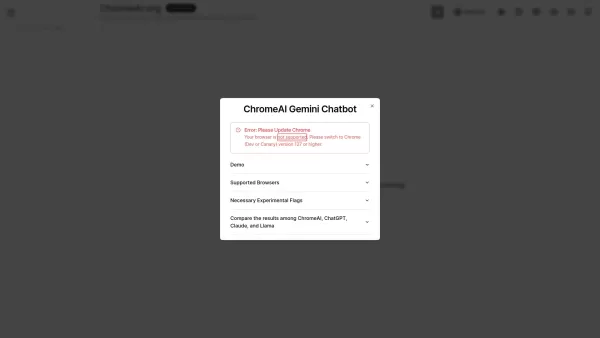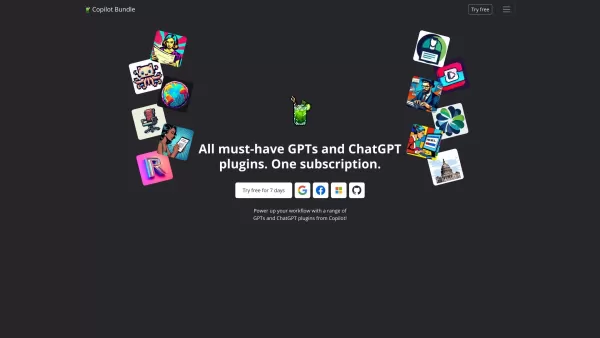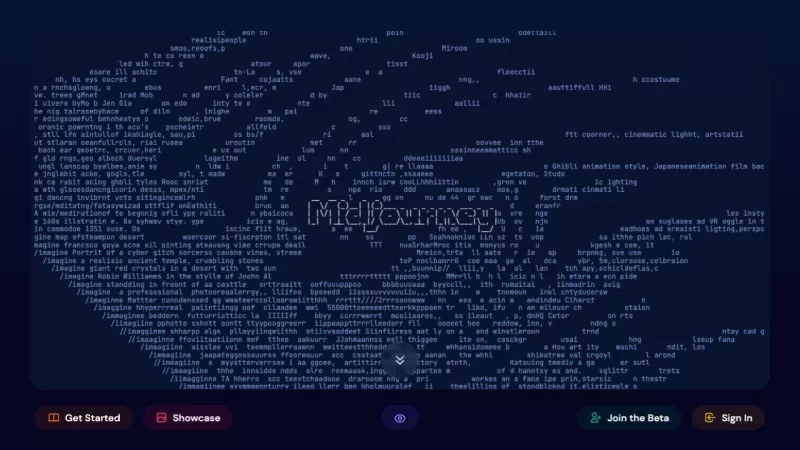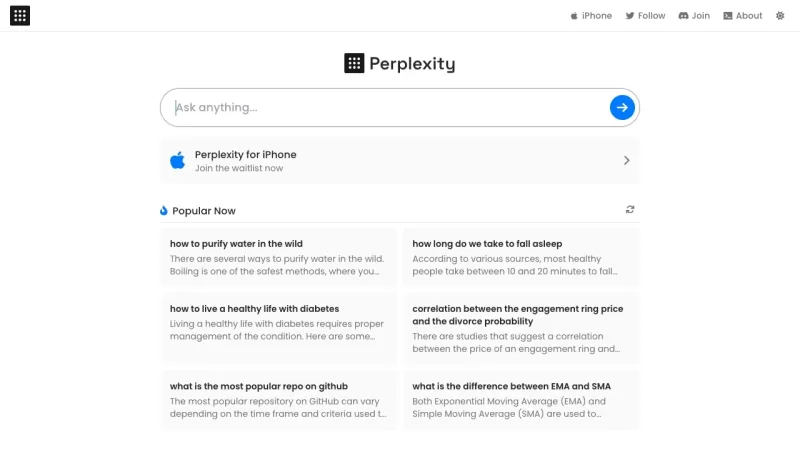Procedural Generation: Exploring Its Strengths, Weaknesses, and Resolutions

 April 23, 2025
April 23, 2025

 JustinLewis
JustinLewis

 7
7
Procedural generation has revolutionized modern game development, offering the allure of endless variety and expansive worlds crafted through algorithms rather than manual design. From the vast landscapes of Minecraft to the diverse galaxies of No Man's Sky, this technique fuels player exploration and discovery. However, tapping into the power of algorithms comes with its own set of challenges. This article dives into the realm of procedural generation, highlighting its potential pitfalls and exploring effective strategies for creating truly engaging gaming experiences.
Understanding Procedural Generation
What is Procedural Generation?
At its heart, procedural generation involves the algorithmic creation of content. In game development, this means generating levels, landscapes, items, characters, music, or other game elements automatically through code, rather than painstakingly crafting them by hand. The magic of this approach lies in its ability to create vast, unique, and unpredictable game worlds, all while reducing the reliance on manual content creation, which can be both time-consuming and costly. Take Minecraft, for example; its procedural generation crafts a nearly limitless landscape, filled with diverse biomes, mountains, caves, and oceans, ensuring that every world is a fresh experience.

It's crucial to differentiate procedural generation from mere randomness. While randomness often plays a role in procedural algorithms, it's the structured application of rules and constraints that truly defines it. A purely random world might be nothing more than chaotic noise, whereas a well-designed procedural system generates content that is both varied and coherent, adhering to underlying design principles to create a cohesive and engaging experience.
Distinguishing Procedural Generation from Artist-Authored Content
The key difference lies in the source of the content. With artist-authored content, a team of designers meticulously crafts every detail, from level layouts to character appearances. In contrast, procedural generation empowers the computer to take on this role, using algorithms to produce these elements automatically.
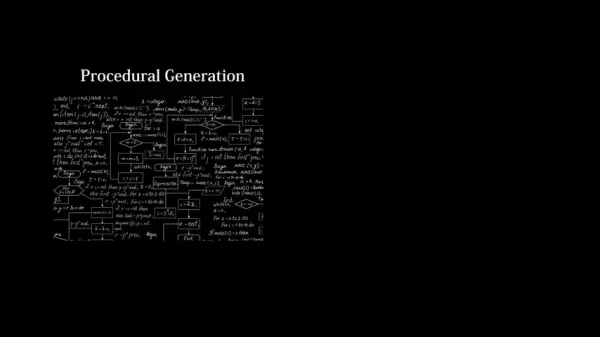
Consider games like God of War Ragnarok, where environments are meticulously designed and hand-crafted by artists. While some elements, such as foliage placement, might use procedural techniques to a degree, the overall level design is primarily driven by human artistry. This offers unparalleled control over the player's experience and allows for carefully orchestrated moments and visual storytelling.
Procedural generation, on the other hand, relinquishes some of that direct control, instead relying on algorithms to create diverse environments based on a set of rules. This can lead to unexpected discoveries and a sense of exploration that is difficult to achieve with purely artist-authored content. However, it also necessitates a focus on carefully designing the underlying algorithms to ensure a consistent level of quality and avoid generating unplayable or uninteresting scenarios.
Taming the Chaos: Strategies for Effective Procedural Generation
Implementing Range Constraints
Range constraints define the boundaries within which the random values used by the algorithms can operate. For instance, when generating terrain height, developers can set a minimum and maximum elevation to prevent excessively tall mountains or deep valleys. This helps maintain a sense of realism and ensures that the generated landscapes remain traversable and visually appealing.

By limiting the possible range of values, range constraints help prevent extreme or undesirable outcomes. They are particularly useful for controlling parameters that directly impact the player's experience, such as the frequency of enemy encounters, the density of resources, or the size of dungeons. While using range constraints, you may have to work extra hard to balance the game.
The best procedural generation can be done by hand, so long as the amount and variation available is too large for a single person to manage on their own.
The Parallel Reduction Algorithm in GPU Programming
When performing procedural generation on the GPU, traditional CPU-based algorithms can become a bottleneck. The Parallel Reduction Algorithm provides an efficient solution by leveraging the massively parallel processing capabilities of the GPU.

Consider finding the minimum or maximum value within a large dataset. A sequential approach on the CPU would iterate through each element, comparing it to the current minimum or maximum. This approach can be slow for very large datasets. In contrast, parallel reduction divides the dataset into smaller chunks, assigning each chunk to a separate thread on the GPU. Each thread then performs the minimum or maximum calculation on its assigned chunk. The results from each thread are then combined in a series of steps until a single minimum or maximum value is obtained. This approach significantly reduces the time required to find the minimum or maximum, especially for massive datasets often encountered in procedural generation. The efficiency and scalability of parallel reduction make it a crucial tool for game developers leveraging the power of the GPU for procedural content creation.
Understanding and Utilizing Shared Memory
Shared memory, also known as local memory, provides a fast and efficient way for threads within a workgroup to communicate and share data. Unlike global memory, which is accessible to all threads on the GPU, shared memory is private to each workgroup, resulting in much lower latency.
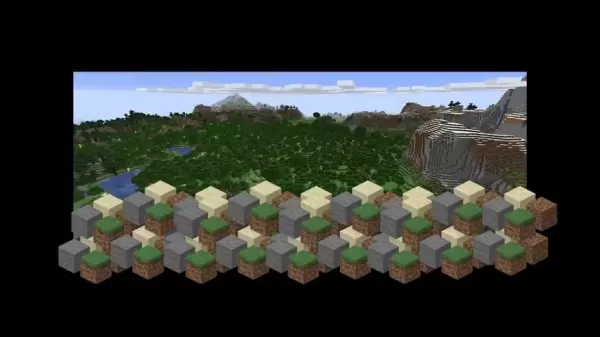
For procedural generation algorithms, shared memory can be used to cache frequently accessed data, such as the coordinates of a specific region of the generated world, which would help reduce the number of accesses to slower global memory. When combined with parallel reduction, shared memory can be used to store intermediate results, enabling threads within a workgroup to quickly combine their findings and efficiently calculate the final minimum or maximum value. While using shared memory is important, it's more about utilizing what the hardware makes available.
The Steps for Creating Procedural Generation
Steps for Creating Procedural Generation
- Laying The Foundation With Good Code: Start with a robust foundation, understanding how code affects your game and using effective and efficient code structure. This will be important since you are trying to optimize your games.
- Apply Range Constraints: Constraining the range will allow for the code to have an upper and lower bound, making it less chaotic and more manageable.
- Using Shared Memory: Using shared memory in parallel code greatly reduces the computing cost.
Pricing for Software that Creates Procedurally Generated Content
Pricing
Software pricing varies from one-off to subscription. The software that often makes this style of code includes Unity, Unreal Engine, and other game creation programs. Prices vary greatly with the needs of your program. Be sure to check for education packages for free use.
Procedural Generation: Balancing Benefits and Drawbacks
Pros
- Potentially limitless content variation
- Reduced manual design time and cost
- Facilitates emergent gameplay experiences
- Enables the creation of really massive, expansive game worlds
Cons
- Risk of incoherent or unplayable content if not properly controlled
- Requires careful design and implementation of underlying algorithms
- May require additional computing costs to do a good job in real time
- Can be seen as inauthentic without artistic style
Core Features
Procedurally Generated Code
These programs have features that can make all sorts of games. Many indie games use procedural generation to make levels or landscapes.
Common Use Cases for Procedural Generation
Procedural Code
While many different use cases exist, code such as Unity allows users to make games using procedural content such as levels and landscapes.
Frequently Asked Questions
What are some popular games that utilize procedural generation?
Several popular games successfully employ procedural generation. Minecraft is well-known for its procedurally generated worlds, offering diverse landscapes and biomes. No Man's Sky utilizes procedural generation to create its vast and explorable universe of planets, flora, and fauna. Dwarf Fortress and RimWorld leverage procedural generation to generate complex storylines and unique world states. These games all feature a blend of hand-crafted content and procedural generation.
Is procedural generation suitable for all types of games?
Procedural generation is well-suited for games that emphasize exploration, discovery, and replayability. However, games with a strong narrative focus or a need for meticulously designed environments may benefit more from artist-authored content. The choice depends on the specific design goals of the game.
What is the difference between random generation and procedural generation?
Random generation relies solely on random numbers, resulting in unpredictable but often incoherent content. Procedural generation, on the other hand, uses algorithms with predefined rules and parameters to generate content, creating a more structured and consistent experience.
Related Questions
What are the key skills needed for procedural generation development?
Effective procedural generation development requires a blend of programming skills, mathematical knowledge, and artistic sensibilities. Proficiency in programming languages like C++ or C# is essential for implementing the algorithms. Understanding mathematical concepts like fractals, noise functions, and probability distributions can greatly enhance the quality and complexity of the generated content. Equally important is a keen eye for design and a strong understanding of the player experience. Procedural generation may make great games, but you need to implement it well and know what you are doing. The key is to do things the best as you can.
Related article
 AI-Powered Songwriting Unlocks Inner Bard, Raises Implications
The world of music is undergoing a fascinating transformation as artificial intelligence (AI) steps into the realm of songwriting. No longer just a sci-fi concept, AI songwriting is here, challenging our traditional views on creativity, authorship, and artistic expression. Let's explore how AI is cr
AI-Powered Songwriting Unlocks Inner Bard, Raises Implications
The world of music is undergoing a fascinating transformation as artificial intelligence (AI) steps into the realm of songwriting. No longer just a sci-fi concept, AI songwriting is here, challenging our traditional views on creativity, authorship, and artistic expression. Let's explore how AI is cr
 Google Claims Imagen 3 AI Image Generator Surpasses DALL-E 3: Here's How to Test It
Choosing the right AI chatbot can feel overwhelming with so many options out there. Google DeepMind stepped in to help, conducting a thorough comparison of top chatbots. Surprisingly, it was an image generator that caught everyone's eye—Imagen 3.I recently gave Google's ImageFX AI image generator a
Google Claims Imagen 3 AI Image Generator Surpasses DALL-E 3: Here's How to Test It
Choosing the right AI chatbot can feel overwhelming with so many options out there. Google DeepMind stepped in to help, conducting a thorough comparison of top chatbots. Surprisingly, it was an image generator that caught everyone's eye—Imagen 3.I recently gave Google's ImageFX AI image generator a
 PixVerse AI Video Generator: Unleash Your Creative Potential
In today's fast-paced digital world, video content has taken the throne. Whether you're a seasoned marketer, an aspiring content creator, or just someone eager to share a story, the ability to craft high-quality videos is invaluable. That's where PixVerse AI steps in, offering a revolutionary platfo
Comments (5)
0/200
PixVerse AI Video Generator: Unleash Your Creative Potential
In today's fast-paced digital world, video content has taken the throne. Whether you're a seasoned marketer, an aspiring content creator, or just someone eager to share a story, the ability to craft high-quality videos is invaluable. That's where PixVerse AI steps in, offering a revolutionary platfo
Comments (5)
0/200
![BenLewis]() BenLewis
BenLewis
 April 23, 2025 at 5:39:14 PM GMT
April 23, 2025 at 5:39:14 PM GMT
Procedural generation is cool, but sometimes it feels too random. Minecraft's worlds are fun, but No Man's Sky can be a bit repetitive. It's a great tool, but needs more variety to keep things fresh. 🌍


 0
0
![LucasWalker]() LucasWalker
LucasWalker
 April 24, 2025 at 2:53:29 AM GMT
April 24, 2025 at 2:53:29 AM GMT
プロシージャル生成は面白いけど、時々ランダムすぎる感じがします。マインクラフトの世界は楽しいけど、ノーマンズスカイは少し単調です。良いツールですが、もっとバラエティが必要ですね。🌍


 0
0
![RoyLopez]() RoyLopez
RoyLopez
 April 24, 2025 at 8:25:34 AM GMT
April 24, 2025 at 8:25:34 AM GMT
프로시저럴 생성은 멋지지만, 때때로 너무 랜덤하게 느껴져요. 마인크래프트의 세계는 재미있지만, 노 맨즈 스카이는 조금 반복적이에요. 좋은 도구지만, 신선함을 유지하려면 더 많은 다양성이 필요해요. 🌍


 0
0
![PeterMartinez]() PeterMartinez
PeterMartinez
 April 23, 2025 at 10:23:46 PM GMT
April 23, 2025 at 10:23:46 PM GMT
A geração procedural é legal, mas às vezes parece muito aleatória. Os mundos do Minecraft são divertidos, mas o No Man's Sky pode ser um pouco repetitivo. É uma ótima ferramenta, mas precisa de mais variedade para manter as coisas frescas. 🌍


 0
0
![BruceSmith]() BruceSmith
BruceSmith
 April 25, 2025 at 3:17:11 AM GMT
April 25, 2025 at 3:17:11 AM GMT
La generación procedural es genial, pero a veces se siente demasiado aleatoria. Los mundos de Minecraft son divertidos, pero No Man's Sky puede ser un poco repetitivo. Es una gran herramienta, pero necesita más variedad para mantener las cosas frescas. 🌍


 0
0

 April 23, 2025
April 23, 2025

 JustinLewis
JustinLewis

 7
7
Procedural generation has revolutionized modern game development, offering the allure of endless variety and expansive worlds crafted through algorithms rather than manual design. From the vast landscapes of Minecraft to the diverse galaxies of No Man's Sky, this technique fuels player exploration and discovery. However, tapping into the power of algorithms comes with its own set of challenges. This article dives into the realm of procedural generation, highlighting its potential pitfalls and exploring effective strategies for creating truly engaging gaming experiences.
Understanding Procedural Generation
What is Procedural Generation?
At its heart, procedural generation involves the algorithmic creation of content. In game development, this means generating levels, landscapes, items, characters, music, or other game elements automatically through code, rather than painstakingly crafting them by hand. The magic of this approach lies in its ability to create vast, unique, and unpredictable game worlds, all while reducing the reliance on manual content creation, which can be both time-consuming and costly. Take Minecraft, for example; its procedural generation crafts a nearly limitless landscape, filled with diverse biomes, mountains, caves, and oceans, ensuring that every world is a fresh experience.

It's crucial to differentiate procedural generation from mere randomness. While randomness often plays a role in procedural algorithms, it's the structured application of rules and constraints that truly defines it. A purely random world might be nothing more than chaotic noise, whereas a well-designed procedural system generates content that is both varied and coherent, adhering to underlying design principles to create a cohesive and engaging experience.
Distinguishing Procedural Generation from Artist-Authored Content
The key difference lies in the source of the content. With artist-authored content, a team of designers meticulously crafts every detail, from level layouts to character appearances. In contrast, procedural generation empowers the computer to take on this role, using algorithms to produce these elements automatically.

Consider games like God of War Ragnarok, where environments are meticulously designed and hand-crafted by artists. While some elements, such as foliage placement, might use procedural techniques to a degree, the overall level design is primarily driven by human artistry. This offers unparalleled control over the player's experience and allows for carefully orchestrated moments and visual storytelling.
Procedural generation, on the other hand, relinquishes some of that direct control, instead relying on algorithms to create diverse environments based on a set of rules. This can lead to unexpected discoveries and a sense of exploration that is difficult to achieve with purely artist-authored content. However, it also necessitates a focus on carefully designing the underlying algorithms to ensure a consistent level of quality and avoid generating unplayable or uninteresting scenarios.
Taming the Chaos: Strategies for Effective Procedural Generation
Implementing Range Constraints
Range constraints define the boundaries within which the random values used by the algorithms can operate. For instance, when generating terrain height, developers can set a minimum and maximum elevation to prevent excessively tall mountains or deep valleys. This helps maintain a sense of realism and ensures that the generated landscapes remain traversable and visually appealing.

By limiting the possible range of values, range constraints help prevent extreme or undesirable outcomes. They are particularly useful for controlling parameters that directly impact the player's experience, such as the frequency of enemy encounters, the density of resources, or the size of dungeons. While using range constraints, you may have to work extra hard to balance the game.
The best procedural generation can be done by hand, so long as the amount and variation available is too large for a single person to manage on their own.
The Parallel Reduction Algorithm in GPU Programming
When performing procedural generation on the GPU, traditional CPU-based algorithms can become a bottleneck. The Parallel Reduction Algorithm provides an efficient solution by leveraging the massively parallel processing capabilities of the GPU.

Consider finding the minimum or maximum value within a large dataset. A sequential approach on the CPU would iterate through each element, comparing it to the current minimum or maximum. This approach can be slow for very large datasets. In contrast, parallel reduction divides the dataset into smaller chunks, assigning each chunk to a separate thread on the GPU. Each thread then performs the minimum or maximum calculation on its assigned chunk. The results from each thread are then combined in a series of steps until a single minimum or maximum value is obtained. This approach significantly reduces the time required to find the minimum or maximum, especially for massive datasets often encountered in procedural generation. The efficiency and scalability of parallel reduction make it a crucial tool for game developers leveraging the power of the GPU for procedural content creation.
Understanding and Utilizing Shared Memory
Shared memory, also known as local memory, provides a fast and efficient way for threads within a workgroup to communicate and share data. Unlike global memory, which is accessible to all threads on the GPU, shared memory is private to each workgroup, resulting in much lower latency.

For procedural generation algorithms, shared memory can be used to cache frequently accessed data, such as the coordinates of a specific region of the generated world, which would help reduce the number of accesses to slower global memory. When combined with parallel reduction, shared memory can be used to store intermediate results, enabling threads within a workgroup to quickly combine their findings and efficiently calculate the final minimum or maximum value. While using shared memory is important, it's more about utilizing what the hardware makes available.
The Steps for Creating Procedural Generation
Steps for Creating Procedural Generation
- Laying The Foundation With Good Code: Start with a robust foundation, understanding how code affects your game and using effective and efficient code structure. This will be important since you are trying to optimize your games.
- Apply Range Constraints: Constraining the range will allow for the code to have an upper and lower bound, making it less chaotic and more manageable.
- Using Shared Memory: Using shared memory in parallel code greatly reduces the computing cost.
Pricing for Software that Creates Procedurally Generated Content
Pricing
Software pricing varies from one-off to subscription. The software that often makes this style of code includes Unity, Unreal Engine, and other game creation programs. Prices vary greatly with the needs of your program. Be sure to check for education packages for free use.
Procedural Generation: Balancing Benefits and Drawbacks
Pros
- Potentially limitless content variation
- Reduced manual design time and cost
- Facilitates emergent gameplay experiences
- Enables the creation of really massive, expansive game worlds
Cons
- Risk of incoherent or unplayable content if not properly controlled
- Requires careful design and implementation of underlying algorithms
- May require additional computing costs to do a good job in real time
- Can be seen as inauthentic without artistic style
Core Features
Procedurally Generated Code
These programs have features that can make all sorts of games. Many indie games use procedural generation to make levels or landscapes.
Common Use Cases for Procedural Generation
Procedural Code
While many different use cases exist, code such as Unity allows users to make games using procedural content such as levels and landscapes.
Frequently Asked Questions
What are some popular games that utilize procedural generation?
Several popular games successfully employ procedural generation. Minecraft is well-known for its procedurally generated worlds, offering diverse landscapes and biomes. No Man's Sky utilizes procedural generation to create its vast and explorable universe of planets, flora, and fauna. Dwarf Fortress and RimWorld leverage procedural generation to generate complex storylines and unique world states. These games all feature a blend of hand-crafted content and procedural generation.
Is procedural generation suitable for all types of games?
Procedural generation is well-suited for games that emphasize exploration, discovery, and replayability. However, games with a strong narrative focus or a need for meticulously designed environments may benefit more from artist-authored content. The choice depends on the specific design goals of the game.
What is the difference between random generation and procedural generation?
Random generation relies solely on random numbers, resulting in unpredictable but often incoherent content. Procedural generation, on the other hand, uses algorithms with predefined rules and parameters to generate content, creating a more structured and consistent experience.
Related Questions
What are the key skills needed for procedural generation development?
Effective procedural generation development requires a blend of programming skills, mathematical knowledge, and artistic sensibilities. Proficiency in programming languages like C++ or C# is essential for implementing the algorithms. Understanding mathematical concepts like fractals, noise functions, and probability distributions can greatly enhance the quality and complexity of the generated content. Equally important is a keen eye for design and a strong understanding of the player experience. Procedural generation may make great games, but you need to implement it well and know what you are doing. The key is to do things the best as you can.
 AI-Powered Songwriting Unlocks Inner Bard, Raises Implications
The world of music is undergoing a fascinating transformation as artificial intelligence (AI) steps into the realm of songwriting. No longer just a sci-fi concept, AI songwriting is here, challenging our traditional views on creativity, authorship, and artistic expression. Let's explore how AI is cr
AI-Powered Songwriting Unlocks Inner Bard, Raises Implications
The world of music is undergoing a fascinating transformation as artificial intelligence (AI) steps into the realm of songwriting. No longer just a sci-fi concept, AI songwriting is here, challenging our traditional views on creativity, authorship, and artistic expression. Let's explore how AI is cr
 Google Claims Imagen 3 AI Image Generator Surpasses DALL-E 3: Here's How to Test It
Choosing the right AI chatbot can feel overwhelming with so many options out there. Google DeepMind stepped in to help, conducting a thorough comparison of top chatbots. Surprisingly, it was an image generator that caught everyone's eye—Imagen 3.I recently gave Google's ImageFX AI image generator a
Google Claims Imagen 3 AI Image Generator Surpasses DALL-E 3: Here's How to Test It
Choosing the right AI chatbot can feel overwhelming with so many options out there. Google DeepMind stepped in to help, conducting a thorough comparison of top chatbots. Surprisingly, it was an image generator that caught everyone's eye—Imagen 3.I recently gave Google's ImageFX AI image generator a
 PixVerse AI Video Generator: Unleash Your Creative Potential
In today's fast-paced digital world, video content has taken the throne. Whether you're a seasoned marketer, an aspiring content creator, or just someone eager to share a story, the ability to craft high-quality videos is invaluable. That's where PixVerse AI steps in, offering a revolutionary platfo
PixVerse AI Video Generator: Unleash Your Creative Potential
In today's fast-paced digital world, video content has taken the throne. Whether you're a seasoned marketer, an aspiring content creator, or just someone eager to share a story, the ability to craft high-quality videos is invaluable. That's where PixVerse AI steps in, offering a revolutionary platfo
 April 23, 2025 at 5:39:14 PM GMT
April 23, 2025 at 5:39:14 PM GMT
Procedural generation is cool, but sometimes it feels too random. Minecraft's worlds are fun, but No Man's Sky can be a bit repetitive. It's a great tool, but needs more variety to keep things fresh. 🌍


 0
0
 April 24, 2025 at 2:53:29 AM GMT
April 24, 2025 at 2:53:29 AM GMT
プロシージャル生成は面白いけど、時々ランダムすぎる感じがします。マインクラフトの世界は楽しいけど、ノーマンズスカイは少し単調です。良いツールですが、もっとバラエティが必要ですね。🌍


 0
0
 April 24, 2025 at 8:25:34 AM GMT
April 24, 2025 at 8:25:34 AM GMT
프로시저럴 생성은 멋지지만, 때때로 너무 랜덤하게 느껴져요. 마인크래프트의 세계는 재미있지만, 노 맨즈 스카이는 조금 반복적이에요. 좋은 도구지만, 신선함을 유지하려면 더 많은 다양성이 필요해요. 🌍


 0
0
 April 23, 2025 at 10:23:46 PM GMT
April 23, 2025 at 10:23:46 PM GMT
A geração procedural é legal, mas às vezes parece muito aleatória. Os mundos do Minecraft são divertidos, mas o No Man's Sky pode ser um pouco repetitivo. É uma ótima ferramenta, mas precisa de mais variedade para manter as coisas frescas. 🌍


 0
0
 April 25, 2025 at 3:17:11 AM GMT
April 25, 2025 at 3:17:11 AM GMT
La generación procedural es genial, pero a veces se siente demasiado aleatoria. Los mundos de Minecraft son divertidos, pero No Man's Sky puede ser un poco repetitivo. Es una gran herramienta, pero necesita más variedad para mantener las cosas frescas. 🌍


 0
0
